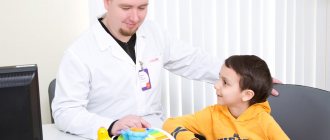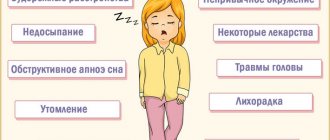A mental disorder that is accompanied by conscious or unconscious pulling out of one's own eyelashes, eyebrows, hair on the head or on another part of the body is called trichotillomania. It has been noticed that patients belonging to the fair half of humanity are more often exposed to such a disorder, while the stronger sex and children are less likely to suffer from it.
Symptoms of trichotillomania
The symptoms of trichotillomania are visible to the naked eye. A person pulls out his own hair on his head, pubic area, eyelashes and eyebrows. At the initial stage, a small amount of hair falls out; in the future, the lesions will increase depending on the severity of the disease.
As a rule, a person twirls the hair on his head around his finger and then pulls it out; he removes eyelashes and eyebrows using tongs or other devices.
Patients pull out hair during stress (even the slightest), as well as while performing some monotonous activities (watching TV, reading a book, talking on the phone, etc.).
The skin on the damaged areas is completely healthy, without redness. However, there are times when the patient scratches areas of the skin until it bleeds.
In 10% of cases, patients eat plucked hair and also bite their nails. This leads to disturbances in the functioning of the gastrointestinal tract, the appearance of trichobezoars in the stomach (hair stones), and dental problems. Also considered complications of the disease are inflammation of the skin and eyes caused by infection.
STORY
The term “trichotillomania” was introduced in 1889 by the French dermatologist Francois Henri Hallopeau (1842-1919), who presented the medical community with the medical history of a young man suffering from itching of the scalp. When the itching became unbearable, the patient would tear out his hair in passion. The phenomenon was called trichotillomania. The name comes from three Greek words: trich - hair, tillo - tearing out, pulling out, mania - pathological attraction. Francois Henri Hallopeau In 1968, ED Vaughan, JL Sawyers and HW Scott described Rapunzel syndrome (named after the main character in the Brothers Grimm fairy tale of the same name about a girl with very long hair) - a type of intestinal obstruction caused by the systematic ingestion of hair (trichophagia), resulting in which causes a conglomerate consisting of hair (trichobezoar) to form in the stomach and small intestine. FV Mannino and RA Delgado in 1969 noted that TTM occurs more often in girls than in boys. In their opinion, the main cause of the disease is the disharmonious relationship between mother and child in early childhood, and TTM can only be treated with psychotherapy. In the domestic literature, O.B. was the first to describe TTM. Feltsman in 1918. In the USSR, the most patients were analyzed by V.I. Garbuzov (1971) and V.M. Bykov (1983).
Causes of trichotillomania
The nature of trichotillomania is not fully understood today. As a rule, the causes of trichotillomania are associated with mental disorders (neurosis, schizophrenia, stress, depression, obsessive-compulsive disorder), however, it can also be a consequence of a lack of iodine and copper, insufficient amounts of vitamins, head injury or concussion, thyroid disease , allergies to drugs or chronic tonsillitis.
By tearing out hair, patients try to suffocate mental pain with physical pain. They often deny there is a problem.
The Salvation psychiatric clinic employs professionals who can correctly determine the cause of the disease, which will allow the problem to be solved faster.
Not long ago, scientists proved that people who suffer from this disease have a damaged gene. This phenomenon is still poorly understood, so it is difficult to make assessments. The disease is often hereditary, which supports the theory.
DIAGNOSTICS
Diagnosis of TTM is based on the collection of anamnesis and examination of the patient. Criteria for diagnosing TTM (Diagnostic and Statistical Manual of Mental Disorders (fifth edition) – DSM-5):
- Periodic pulling out of one's own hair, leading to hair loss.
- Repeated attempts by the patient to stop such actions or reduce their frequency.
- Hair pulling causes clinically significant distress or disruption in social, occupational, or other areas of importance to the patient.
- Hair pulling or loss cannot be explained by another medical condition (eg, dermatological).
- Hair pulling is not a symptom of another mental disorder (such as the patient's attempts to improve perceived defects or deficiencies in appearance, which can be observed in body dysmorphic disorder).
For the psychiatric assessment of TTM, a questionnaire is used. Many psychometric scales have been developed abroad to assess the severity of TTM (Massachusetts General Hospital Hair Pulling Scale, Psychiatric Institute Trichotillomania Scale, National Institute of Mental Health (NIMH) TTM severity scale, etc. .). The main objectives of the survey are to find out: 1) the average time spent on hair pulling; 2) ways to resist the urge to pull out; 3) is it possible to control the urge; 4) how the patient feels before and after pulling out; 5) degree of subjective discomfort; 6) the impact of the disease on the quality of everyday life. During a dermatological examination, the following are determined: - areas of thinning hair or baldness on the scalp, eyebrows, eyelashes, pubis; - foci of alopecia are single or multiple, round, linear or bizarre in shape; - the skin in areas of baldness is normal or rough to the touch; - the mouths of the hair follicles are clearly marked; - hair is usually of different lengths, may be broken off in the middle or look like small black dots or stubble; - skin excoriations in areas of baldness and manifestations of pyoderma are not uncommon - crusts covering excoriations, pustules, erythema, swelling; - no peeling; ‒ hair-pulling test along the edges of bald areas is negative. Trichoscopic signs of TTM: - reduced hair density; - hair broken off at different lengths; - short hair with symptoms of trichoptilosis (split ends); - unevenly twisted hair; - blackheads (cadaverized hair, which are comedon-like follicular blockages); - presence of vellus (short vellus hair); - hair powder (remains of the hair shaft damaged as a result of mechanical action); - absence of hair in the form of “exclamation marks” (dystrophically altered hair, narrowed in the proximal part). Videodermatoscopy for TTM (photo from the collection of Doctor of Medical Sciences, Prof. Yu.V. Sergeeva) An additional sign is the examination of the fingernails - in patients they are very sharp and shiny as a result of constant friction. Infection and damage to the skin of the fingers, which constantly pull out hair, are possible (the tips of the thumb and index fingers are most often affected). A trichogram can be of great help in diagnosis, the analysis of which reveals: - anagen hair with torn root sheaths; - complete absence of telogen hair; - increased density of catagen hair; - injured hair follicles without perifocal inflammation; - atrophic catagen hair; - sometimes you can detect the phenomena of trichomalacia.
Trichotillomania in adults
Trichotillomania in adults is more pronounced. Often, in the initial stages of the disease, adults try to hide the problem with the help of wigs, cosmetics, eyebrow tattooing, etc. Because of this, it can be difficult to identify the disease right away, which leads to complications in treatment.
Women suffer from trichotillomania almost 2 times more often than men. This is largely due to the fact that women pay more attention to their appearance.
Sometimes the disease begins with the pulling out of gray hairs. Some patients complain that the head begins to itch and after pulling out the gray hair, the tooth stops.
EPIDEMIOLOGY
Previously, it was mistakenly believed that TTM was an extremely unusual and rare disease. However, epidemiological studies have shown that TTM affects from 1-3% to 5% of the planet's population. Among the patients, females aged 11-16 years predominate. There is an opinion that the real number of cases of TTM is underestimated due to the denial of their behavior by some of the respondents, as well as their tendency not to seek help. This may particularly apply to men who claim androgenetic alopecia to hide their condition. In addition, practicing dermatologists are often unaware of the existence of this disorder and may not ask patients whether they pull out hair.
Trichotillomania in adolescents
Trichotillomania in adolescents may be associated with hormonal changes in the body or with psychological disorders. At this age, a person reacts very sharply to what is happening, so problems in the family, frequent quarrels between parents or their indifference to the child’s problems, ridicule from peers and problems with socialization lead to a worsening of the condition.
Teenagers suffering from trichotillomania try to avoid contact with people and spend most of their time alone.
The task of parents is to find a common language with the child, stop criticizing over trifles, help him socialize and solve psychological problems.
If the problems are related to hormonal changes, then medications can be effective. They are prescribed by a doctor after consulting an endocrinologist and passing all the necessary tests.
What is trichotillomania and ICD 10 code
Trichotillomania (code according to the international classification of diseases F 63.3) – pulling out hairs on any part of the body. Typically, patients depilate themselves using their hands. Sometimes objects are used for this purpose - tweezers, pins, needles. The process is complemented by playing with hair, eating it, and biting nails. The causes of the disorder most often lie in the psychological status of the person. Often patients hide their attraction. Such secrecy is inherent in male patients. The main contingent of those suffering from the disease are teenage girls whose problem was noticed by their parents.
Areas subject to auto-depilation:
- face (eyelashes, eyebrows);
- limbs;
- breast;
- stomach;
- head;
- pubis.
If trichotillomania is suspected, the patient is consulted and examined by a dermatologist and psychiatrist, followed by a questionnaire and a trichogram (diagnosis of the condition of the hair and scalp).
This diagnosis is not made after skin inflammation precedes such behavior, or in cases where autodepilation is a reaction to delusions and hallucinations.
Treatment of trichotillomania
Treatment of trichotillomania begins with diagnostic measures: it is necessary to exclude the possibility of fungal diseases and syphilis. The patient also needs to undergo a general blood and urine test so that the doctor can assess the general condition of the body.
At this stage, the doctor interviews the patient and his relatives, finds out the patient’s diet and habits. It is also necessary to consult a dermatologist, neurologist and endocrinologist. This will help identify concomitant diseases. If the patient eats his hair, a consultation with a gastroenterologist may also be scheduled.
At the initial stage, it is very important to determine the cause of the disease. 60% of the success of treatment depends on this.
Due to the fact that the nature of the disease is still poorly understood, it is treated using the same means as for other psychological diseases - sedatives and antidepressants. Radiotherapy is also used to stimulate the spinal cord roots. Drug treatment in children is not effective.
The doctor necessarily prescribes a diet rich in iodine and copper, vitamin A, and prescribes vitamin-mineral complexes.
Patients have their scalp and pubic hair completely shaved and their eyelashes and eyebrows removed. Such measures have a short-term effect (until the hair grows back), but during this time it is possible to provide psychological support to the patient and eliminate the causes of the disease. Doctors also recommend wearing a special headdress that makes it impossible to pull out hair.
Great attention is paid to providing psychological support. Psychologists work with patients both individually and in group sessions. In addition, hypnosis and cognitive behavioral psychotherapy are actively used. They can be very effective.
General therapy also includes the treatment of eye or skin diseases that appear as a result of trichotillomania.
How to treat
How to get rid of the obsessive desire to pull out hair? When diagnosed with a disease such as trichotillomania, treatment of which is often successful, people at first feel helpless and lost. However, a set goal, a great desire to get rid of the problem and the help of a psychotherapist will help resolve the current situation.
There is no special treatment method for such a mental disorder. Therefore, treatment can be carried out at home, using the advice of a specialist. First you need to find out the cause of trichotillomania. The cognitive approach often helps to replace an old habit with a less traumatic and harmful one. For example, whenever you want to pull out your eyelashes or eyebrows, start massaging your earlobe. Mental remedies also help develop stress resistance in patients.
Many people suffering from trichotillomania have low self-esteem. Therefore, methods aimed at increasing it and self-acceptance effectively combat the manifestations of the disease.
To get rid of complexes, it is recommended to analyze the moments that a person is not satisfied with in himself. If eyelash pulling occurs automatically when reading an interesting book or watching a movie with an exciting plot, then you can use an object, upon contact with which awareness of the action will come. This could be a hair hoop or a hair clip, a cap that the patient is unusual in wearing.
When it comes to children, it is very important to understand that parents should first of all help the child cope with his problem. It is worth being patient and talking with your child about his experiences and feelings. Activities like beadwork, construction sets, or coloring pictures can be a method of calming down.
To get rid of trichotillomania, adults are advised to choose a way to relax, renounce obsessive thoughts and distract from worries. This could be going to the gym, dancing, going on amusement rides, or going to the theater.
Sometimes they resort to more radical methods of solving the issue of getting rid of a bad habit. Shaving your head completely can provide shock therapy, which will distract you from the urge to pull your hair out for a long time. Or add artificial eyelashes, which will highlight your beauty and you simply won’t want to spoil them. A similar effect will be produced by moving, changing jobs, breaking up relationships that have a negative impact.
Medical methods
To treat the disease trichotillomania, they resort to combination therapy, which is accompanied by medication in parallel with psychotherapy. Medications that have a sedative effect and antidepressants will help the patient get rid of depression, calm the nervous system, and reduce the level of depression.
Abundant consumption of vitamins, especially group A, will also help improve the patient’s well-being.
Often they resort to methods such as X-ray irradiation of the spinal cord roots, treatment with paraffin, cold and hypnosis.
To get rid of the visible consequences of the bad habit of pulling out eyelashes and hair on the head - areas of baldness, ointments based on hormones are used.
Treatment with unconventional methods
To get rid of a psychological problem at home, which is accompanied by an uncontrollable desire to pull out eyelashes, eyebrows or hair on the head, you can use garlic oil. The product can be purchased at a pharmacy or prepared independently. Take it 1 teaspoon three times a day for three months.
It is also recommended to drink decoctions of mint, lemon balm, chamomile, valerian, oregano, and to include foods rich in vitamins A and C in your diet. You should consume more liver, eggs and milk.
The article has been verified by the editors
Treatment of trichotillomania at home
Treatment of trichotillomania at home is effective only if the cause of stress has been completely eliminated. The most effective treatment is considered to be one in which the patient underwent a course of psychotherapy in a medical institution, and then returned home, where he continued treatment. As you know, houses and walls are treated, conditions are better than in a hospital.
As for trichotillomania in children and adolescents, the disease goes away quite quickly as soon as the parents are able to come to an agreement among themselves and reconsider their views on raising a child.
The attending physician continues to advise the patient and his relatives on treatment issues, and if a relapse occurs, the patient must be immediately taken to the facility.
Reviews about the treatment of trichotillomania
Reviews about the treatment of trichotillomania at the Salvation psychiatric clinic are only positive. Real professionals with extensive experience work here who can cope with even the most complex problem. They will find a caring approach to each patient and will make their stay at the center more pleasant and comfortable. Doctors work not only with the patient, but also with his relatives, which allows them to eliminate the cause of the disease.
The center is located away from the noisy city in an ecologically clean area. This allows patients to enjoy nature and walk around the center.
The center itself has all the necessary equipment and medications for the treatment of many psychological diseases.
A clear advantage of the center is good living conditions. The buildings have been renovated, all rooms are equipped with everything necessary.
Treatment at the center is carried out anonymously, which will not negatively affect the patient’s reputation. After completion of treatment, the center’s workers will help the person socialize and even get a job.









